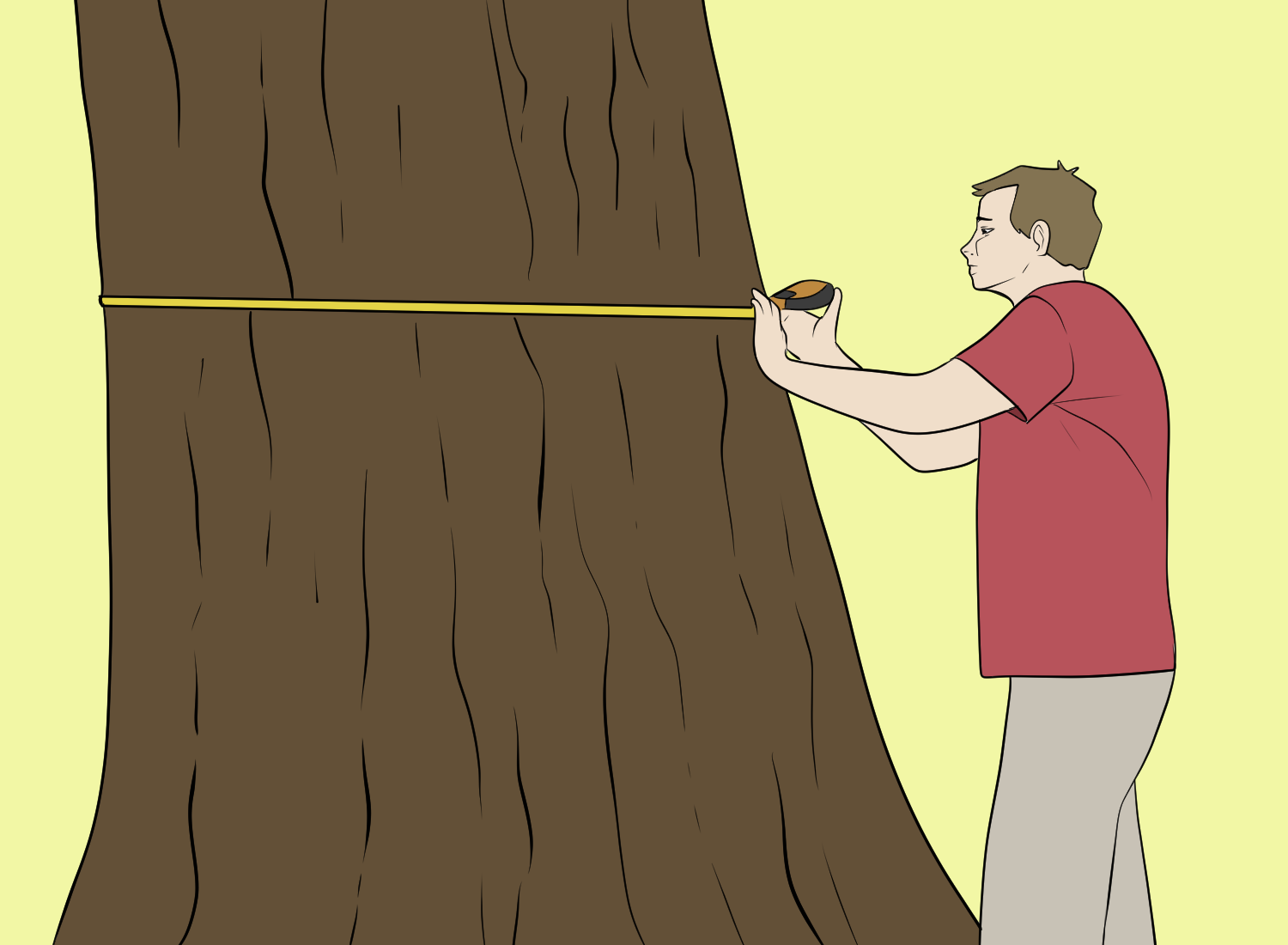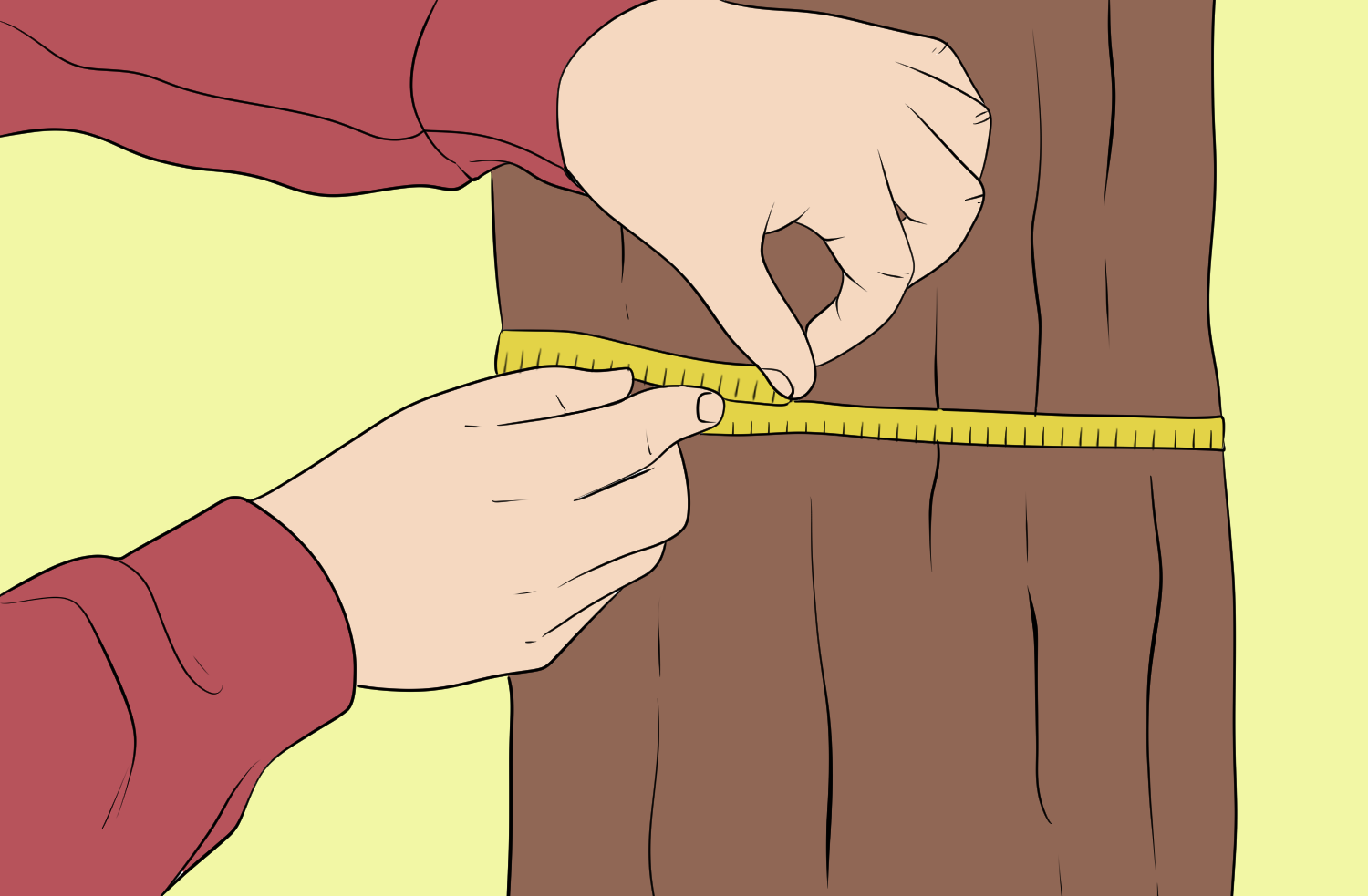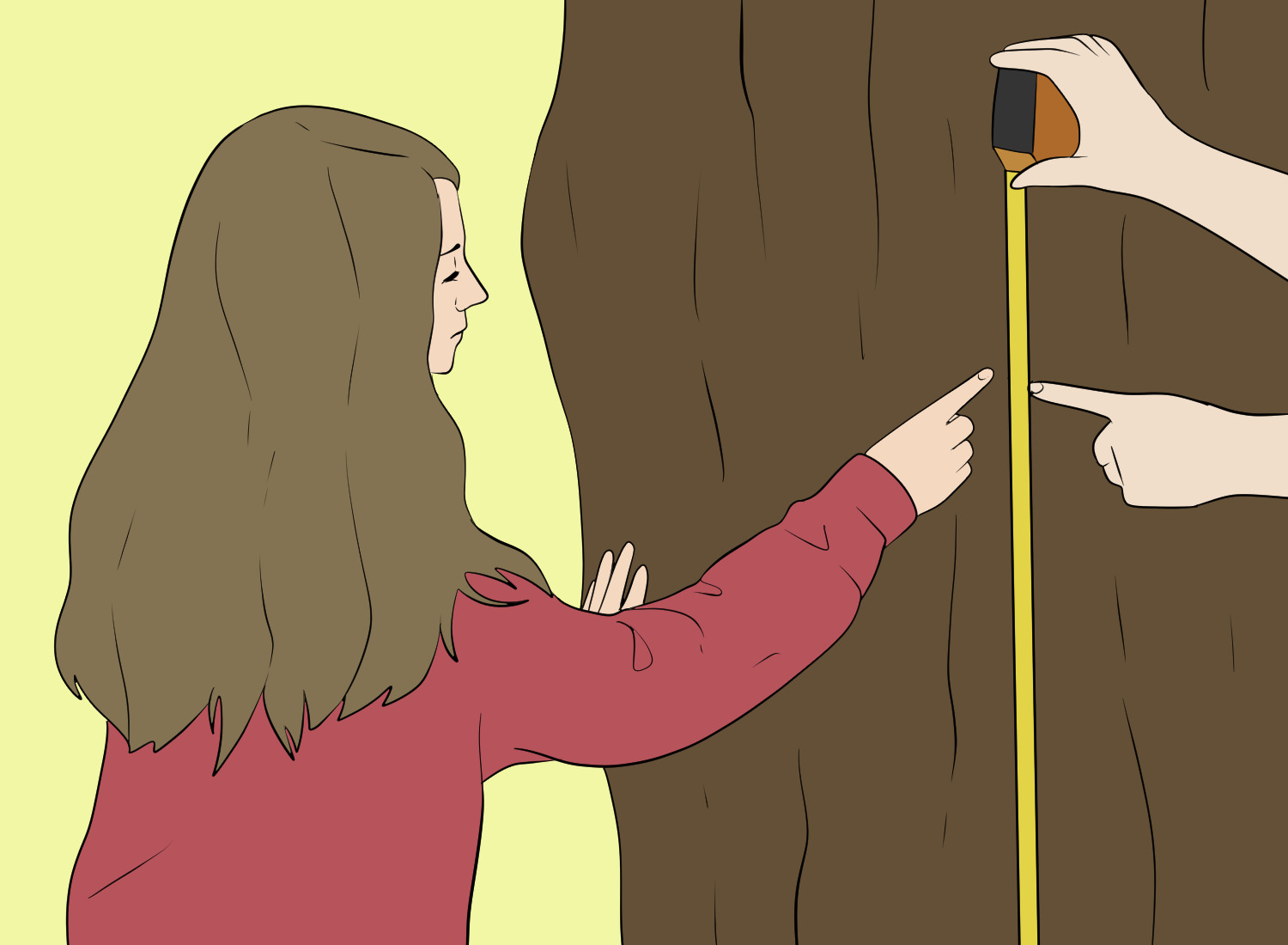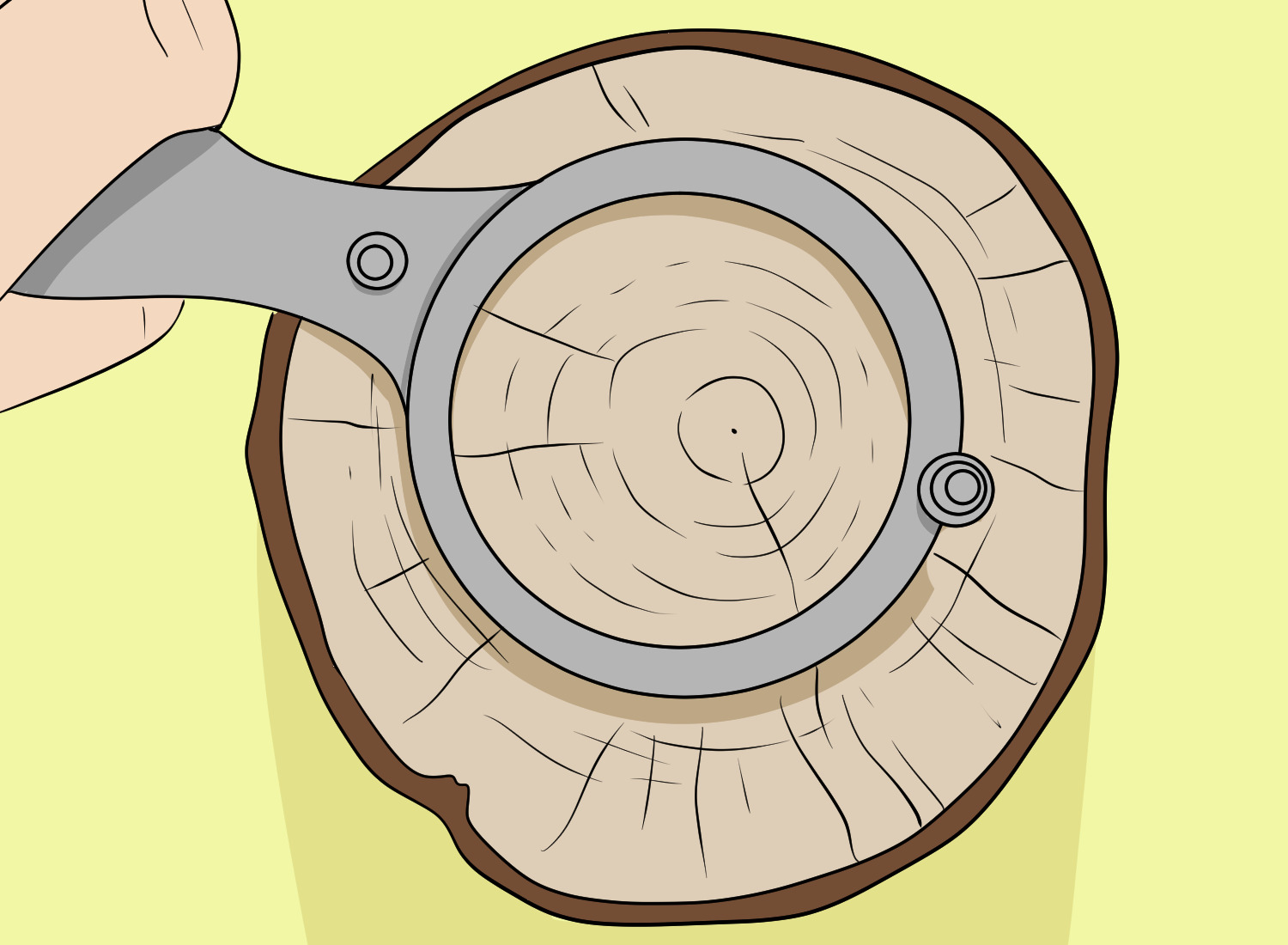Have you ever gazed upon a grand tree and pondered its age? Determining how old a tree is can yield important information about its past, growth trends, and the care it needs.
A simple way to estimate the age of a tree is to measure the trunk’s circumference (at chest height) and divide by Pi (3.14) to get the diameter. Then you multiply the tree’s diameter by the tree species growth factor.

What we cover
ToggleExample
Tree Species: Norway Spruce
Trunk Circumference: 86 inches
Growth factor: 5
Formula
86” circumference / Pi (3.14) = 27.39 (diameter of the trunk)
x 5 (Growth factor) = 136 Years
This formula allows you to manually work out the age of a tree. Or you could use this tree age calculator.
Tree Age Calculator
Measuring Trunk Circumference for Age Estimation

One of the first steps in estimating a tree’s age is to measure its circumference. This involves wrapping a measuring tape around the tree trunk at breast height, which is approximately 4 feet (1.2m) from the ground.
Converting circumference to diameter
Once you have the tree’s circumference, you’ll need to convert it to diameter to proceed with age estimation. The formula for this conversion is simple: diameter = circumference/pi (3.14).
For example, if a tree has a circumference of 10 feet, its diameter would be calculated as 10/pi, which equals approximately 3.18 feet. This diameter measurement will be essential for the next step in estimating the tree’s age.
Calculating Tree Diameter and Growth Factor
With the tree’s diameter in hand, we can now introduce the concept of growth factors to our age estimation process. Growth factors are specific to each tree species and represent the average tree growth rate.
We can approximate the tree’s age by multiplying the diameter by the growth factor for a specific tree species.

List of tree species growth factors
| Tree | Growth Factor (Imperial) | Growth Factor (metric) |
|---|---|---|
| American beech | 6 | 2.36 |
| American elm | 4 | 1.57 |
| Sycamore | 4 | 1.57 |
| Austrian Pine | 4.5 | 1.77 |
| Red pine | 5.5 | 2.17 |
| White pine | 5 | 1.97 |
| Colorado blue spruce | 4.5 | 1.77 |
| Norway spruce | 5 | 1.97 |
| Scotch pine | 3.5 | 1.38 |
| White pine | 5 | 1.97 |
| Black cherry | 5 | 1.97 |
| Black maple | 5 | 1.97 |
| Norway maple | 4.5 | 1.77 |
| Red maple | 4.5 | 1.77 |
| Silver maple | 3 | 1.18 |
| Sugar maple | 5.5 | 2.17 |
| Black walnut | 4.5 | 1.77 |
| Northern red oak | 4 | 1.57 |
| Pin oak | 3 | 1.18 |
| Scarlet oak | 4 | 1.57 |
| Shingle oak | 6 | 2.36 |
| Shumard oak | 3 | 1.18 |
| White oak | 5 | 1.97 |
| Bradford pear (invasive non-native, not recommended | 3 | 1.18 |
| Common horsechestnut | 8 | 3.15 |
| Douglas fir | 5 | 1.97 |
| Cottonwood | 2 | 0.79 |
| European beech | 4 | 1.57 |
| European white birch | 5 | 1.97 |
| Green ash | 4 | 1.57 |
| Ironwood | 7 | 2.76 |
| Kentucky coffee tree | 3 | 1.18 |
| Littleleaf linden | 3 | 1.18 |
| Red pine | 5.5 | 2.17 |
| River birch | 3.5 | 1.38 |
| Scotch pine | 3.5 | 1.38 |
| Shagbark hickory | 7.5 | 2.95 |
| Sweet gum | 4 | 1.57 |
| Tulip tree | 3 | 1.18 |
| White ash | 5 | 1.97 |
| White fir | 7.5 | 2.95 |
| Yellow buckeye | 5 | 1.97 |
Estimating Tree Age with Diameter and Growth Factor
Now that we have the tree’s diameter and the growth factor for its species, we can estimate its age by multiplying these two values together. This method provides a rough approximation of the tree’s age, which can be useful for various purposes, such as understanding the tree’s growth patterns and determining appropriate care strategies.
Let’s consider a few example calculations for estimating tree age1 using diameter and growth factors. For a Big Leaf Maple tree with a diameter of 2 feet, we would multiply the diameter (2) by its growth factor (4.7) to get an estimated age of 9.4 years.
Similarly, for a Pin Oak tree with a diameter of 3 feet, we would multiply the diameter (3) by its growth factor (3.0) to get an estimated age of 9 years. These examples illustrate how diameter and growth factors can be combined to estimate the age of various tree species.
Limitations of this method
While estimating tree age using diameter and growth factor can provide useful insights, it’s important to recognize the limitations of this method. First, this approach is not always reliable and can be influenced by factors such as tree species, environmental conditions, and age.
Additionally, errors in measuring a tree’s diameter can significantly impact the accuracy of the age estimate. Nevertheless, this method can still be a helpful tool for gaining a general understanding of a tree’s age.
Alternative Methods for Estimating Tree Age

In addition to the diameter and growth factor method, there are several alternative approaches to estimating tree age, but most involve drilling core samples to count rings or for carbon dating.
Each method has its advantages and disadvantages, but we are best just estimating with the above method and leaving the tree be. Drilling into it can have negative implications as water, rot, pests, and diseases can make their way into any opening, which will cut the life of the tree short.
Radiocarbon dating (for certain tree species)
Radiocarbon dating is a method used to estimate tree age for certain tree species. This approach involves analyzing the chemicals within the tree to determine its age.
While radiocarbon dating can be a useful tool for estimating tree age in some cases, it is also subject to limitations, such as the potential impact of illness and environmental factors on the tree. As with any method, it’s essential to consider the unique characteristics and limitations of radiocarbon dating when using it to estimate tree age.
FAQ's
Dendrochronology2 can be used to tell when the tree has naturally died or fallen if the calendar year dates of tree growth rings can be determined.
If the tree is on well-drained, moist soil for a period of 20 years it can grow up to 40 ft.
As an individual tree, the current record holder for the oldest tree in the world is the Great Basin bristlecone pine trees from California and Nevada. The tree-ring cross-referencing has proved to be almost 5,000 years old.
- Lindsey Purcell, (2018) How Old Is My Tree? <https://www.purduelandscapereport.org/article/how-old-is-my-tree/> Accessed: 02-03-2024
- Amy Tikkanen, (2020) Dendrochronology. <https://www.britannica.com/science/dendrochronology> Accessed: 02-03-2024



